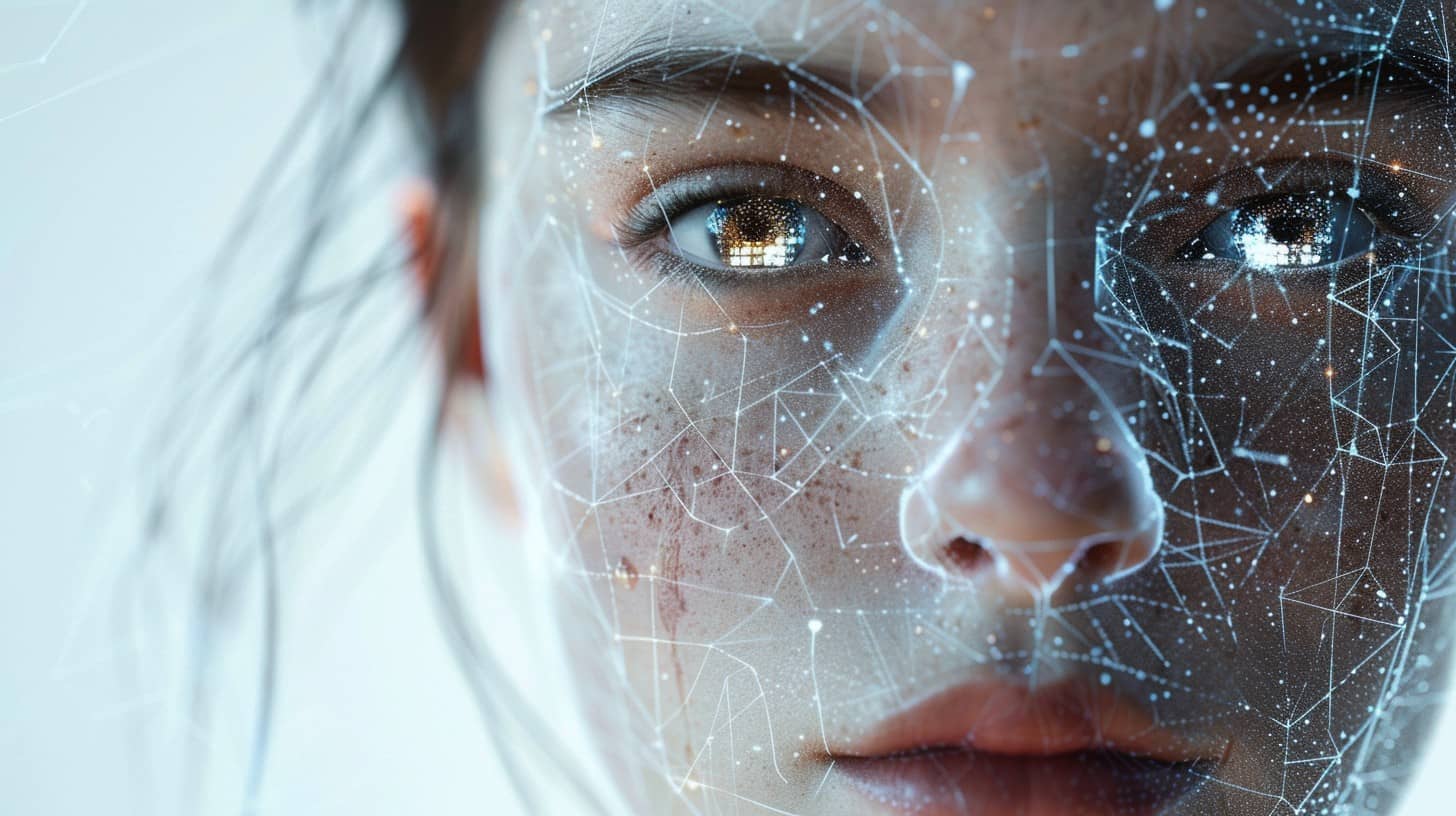You’re probably starting to hear quite a bit about deepfakes and find yourself pondering, “Is this even allowed?” Trust me, I’ve found myself wrestling with that very question and stumbled upon something pretty interesting: a number of states have actually passed laws to combat the harmful use of deepfakes.
This piece aims to illuminate the tangled landscape of deepfake legality, highlighting existing regulations, their implications, and offering some tips on recognizing these cunning fakes.
So, let’s peel back the curtain on AI’s newest frontier together—keep that curiosity burning!
Key Takeaways
Deepfake technology uses AI to create videos and photos that look real but are fake. It can change faces, mimic voices, and create new content.
Laws about deepfakes vary across states. Ten states have made it illegal to share explicit deepfake content without consent.
Deepfake pornography is a big legal issue. It violates privacy rights and can lead to charges like defamation or sexual harassment.
People use various technologies and tools to spot deepfakes, like looking for unnatural movements or using tech to check videos and texts for fakes.
Courts are taking action against people who make harmful deepfakes. They could get fined or go to jail for breaking the rules.
Table of Contents
What is Deepfake Technology?
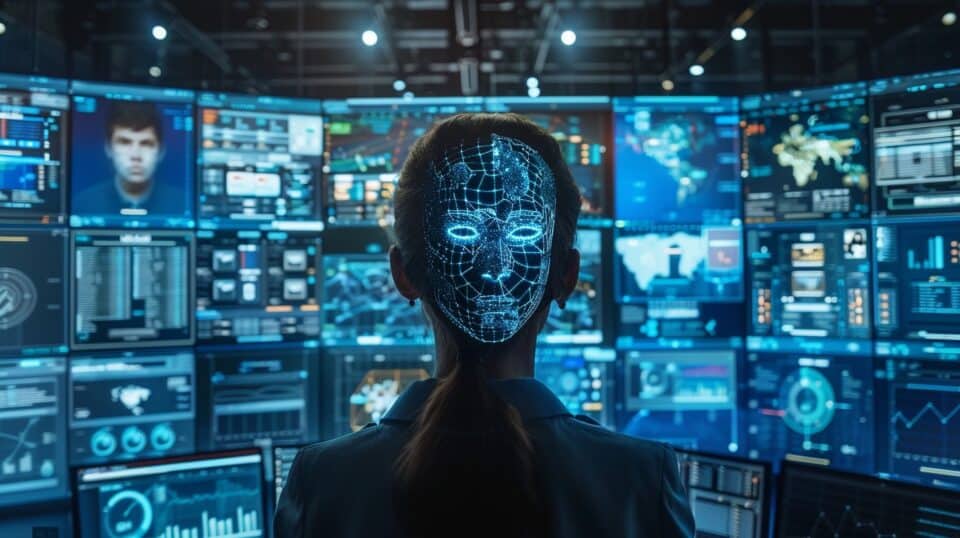
Deepfake technology harnesses advanced artificial intelligence (AI) to create videos or photos that look real but are not. Imagine taking a picture of someone and then, using this technology, making it seem like they said or did something they never actually did.
It’s like a magic trick with digital images and sounds, powered by machine learning algorithms called generative adversarial networks (GANs). This tech can swap faces in videos, mimic voices in audio clips, and even generate entirely new content that appears incredibly realistic.
The implications are huge – deepfakes have started to influence everything from political discourse to personal reputations. They’ve made headlines for creating fake news, impersonating public figures, and more worryingly, fueling deepfake pornography without people’s consent.
With just a few clicks on an iPad or iPhone app, the line between truth and fiction blurs further every day. Now let’s explore how the law is racing to catch up with these developments.
Legal Status of Deepfakes
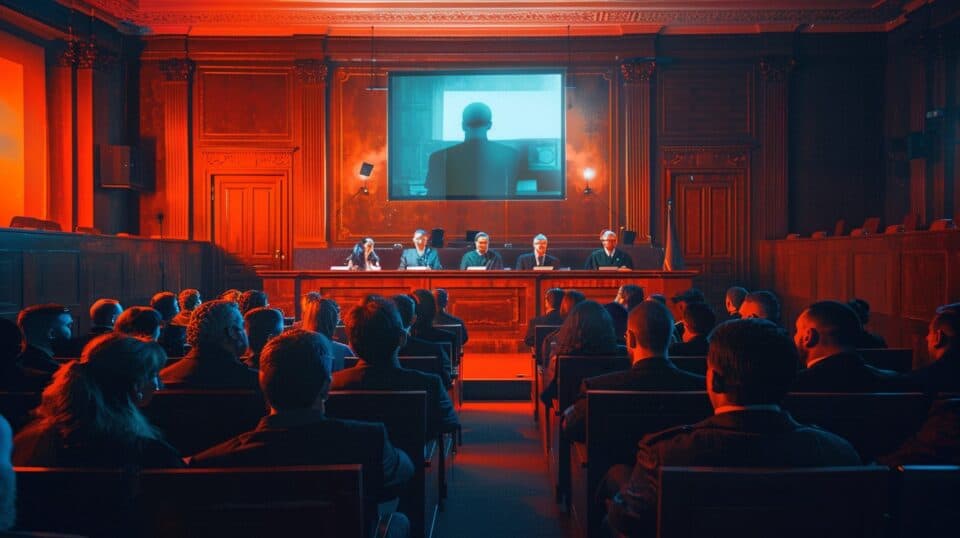
The law struggles to keep pace with deepfake technology, creating a complex legal gray area. States vary widely in their legislation against these digitally altered realities, leaving enforcement uneven across the board.
Current laws on deepfakes
Laws on deepfakes vary across states. At least 10 states have made it illegal to create and share explicit deepfake content. They hand out fines and sometimes jail time to those who break the rules.
However, some places require victims to prove an “illicit motive,” making their fight harder.
California and New York allow people to sue over deepfakes in civil court. Virginia and Georgia consider creating or sharing non-consensual deepfake porn a crime. Prosecutors often rely on revenge porn laws for cases involving non-consensual deepfake pornography, showing existing laws are being stretched to cover new digital ground.
Variations in state laws
State laws on deepfakes vary widely. In California and New York, for instance, people can sue creators of non-consensual deepfake porn in civil court. This means victims have the power to fight back.
Virginia and Georgia go a step further, making it a crime to create or share these videos without consent. It’s important for us as parents to know this because it affects how we protect our children from online harms.
Some states demand proof of an “illicit motive” behind creating deepfakes, which could make things tough for victims trying to prove their case. This requirement places a hefty burden on them – imagine having to prove not just that someone did something harmful, but also why they did it.
It’s tricky and shows how complex tackling digital rights and privacy issues is becoming with advancements in technology like AI and deep learning-based apps.
Legal Implications of Deepfake Pornography
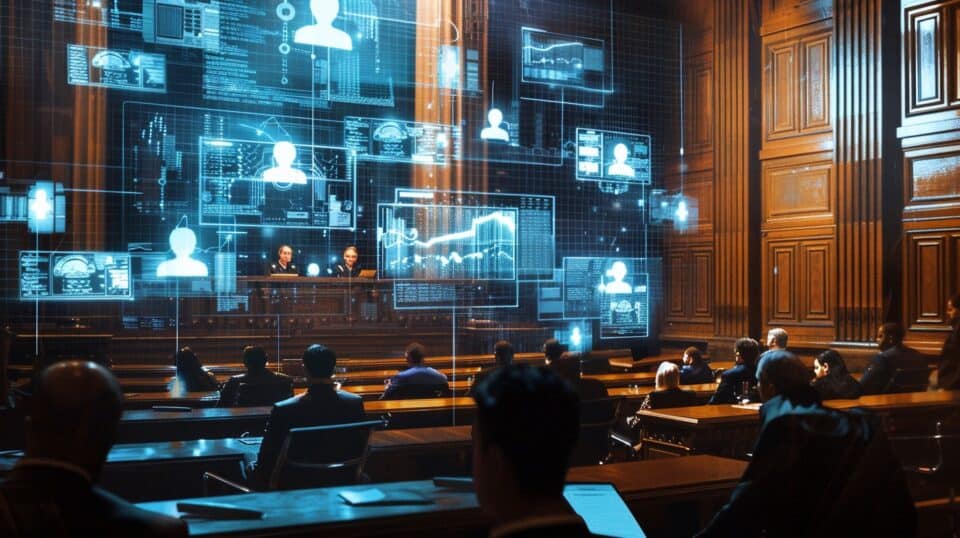
Creating deepfake pornography crosses serious legal lines, often leading to harsh consequences. It violates privacy and can result in charges like defamation or sexual harassment.
Understanding the legal boundaries
Deepfake technology blurs lines, especially in legal realms. States are starting to take action against deepfake pornography. As it stands, 10 states have laws making the sharing of nonconsensual pornographic images a punishable act.
These specific laws target explicit content created with AI, aiming to protect victims like Taylor Swift who’ve been digitally victimized. Penalties can be severe—ranging from hefty fines to jail time for those found guilty.
However, there’s a catch. Some state laws demand proof of an “illicit motive.” This means victims might need to demonstrate that the creator had harmful intentions—a daunting task that places extra pressure on individuals already suffering from such violations.
Understanding these legal intricacies is crucial for navigating and potentially fighting back against this misuse of technology.
Potential punishments for creating deepfake porn
I’ve learned that laws are getting stricter about deepfake porn. At least 10 states now have specific rules against these explicit fakes. If someone breaks these laws, they could face serious consequences.
Penalties can range from hefty fines to jail time. I find it important to know this because the impact of such content is severe.
States like California and New York allow people to sue the creators of non-consensual deepfake porn in civil court. Meanwhile, Virginia and Georgia treat making or sharing this content as a criminal act.
A US congressman from New York even proposed a bill aiming at making the distribution of deepfakes a federal crime, allowing victims to seek relief while staying anonymous. This shows how seriously the law takes this issue, highlighting the need for everyone to understand and respect online privacy and consent.
The Rise and Impact of AI Deepfake Porn
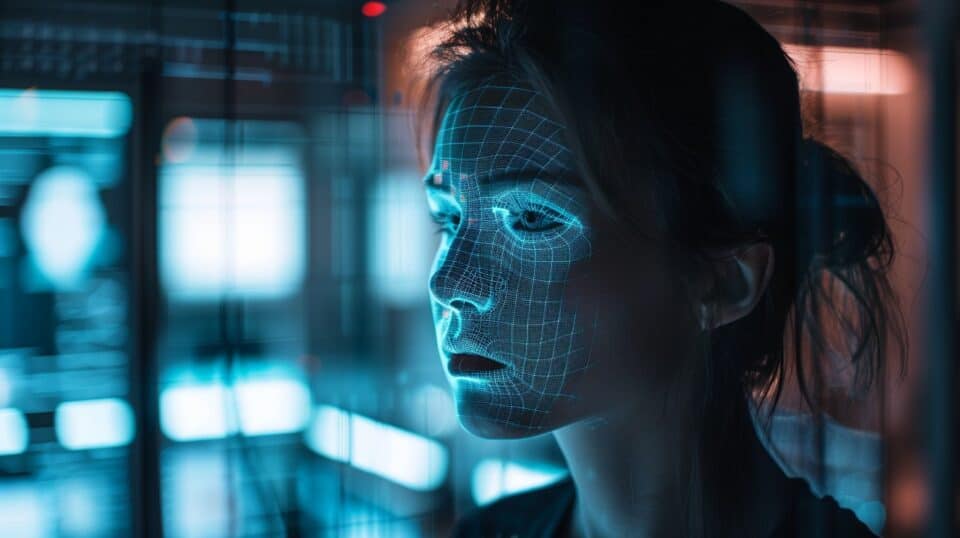
Deepfake porn, crafted using AI, has surged online—sparking outrage and concern. It blurs lines between reality and fiction, challenging our perceptions of consent and privacy.
How deepfakes are created
I want to talk about how deepfakes are made. This technology came out in 2017 and is getting more common. Here’s a quick rundown:
- Collecting Data: First, thousands of photos and videos of the target person are gathered. Social media platforms are often mined for this content. Every smile, frown, and wink helps.
- Choosing Software: Creators use special AI software designed for making deepfakes. Some tools are user-friendly, working on a simple laptop.
- Training the AI: This step involves feeding the AI all collected data. The AI studies these images to learn how to mimic the person’s facial expressions and movements.
- Face-Swapping: Using what it has learned, the AI replaces the face in an existing video with the target’s face. It blends them so well it looks real.
- Refining Audio: If needed, text-to-speech technology mimics the person’s voice, matching it to their movements in the video.
- Final Edits: Creators fine-tune the video for more realism. They adjust lighting, shadows, and even eye movements.
Public perception and responses to deepfake porn
After exploring how deepfakes are crafted, it’s clear the public holds strong opinions on their creation and use, especially when it involves explicit content. Many feel angry and violated upon discovering their images manipulated into adult content without consent.
This growing concern has led to a demand for laws that can effectively tackle this misuse of technology.
States are listening to these calls for action—10 have already passed laws against sharing these digitally altered videos. People want protections in place to prevent being victimized by such exploitation.
They argue not just for themselves but for others who might fall prey to this form of digital abuse, highlighting the urgent need for legal mechanisms that address both prevention and punishment.
The Role of AI in Deepfake Creation
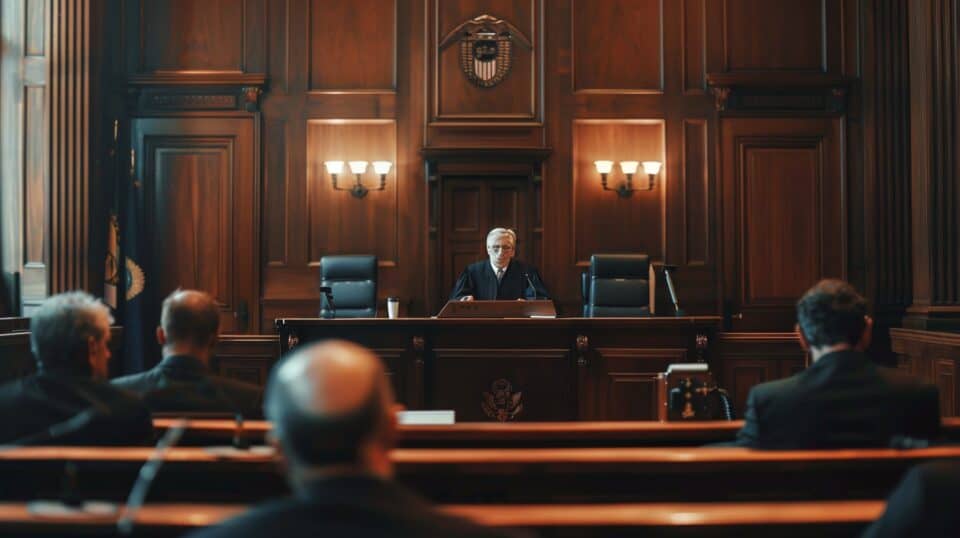
AI plays a big part in creating deepfakes, blending images and videos to look real. It raises tough questions about what’s ethical in the world of digital content.
The technological aspect of deepfakes
Deepfakes blend artificial intelligence and sophisticated software to create or alter video and audio content, making it seem real. It’s like a high-tech version of Photoshop for videos.
This technology learns from loads of data—photos, videos, sound clips—to mimic someone’s likeness and voice almost perfectly. Think about how The Irishman used tech to de-age actors, or how TikTok can swap faces in seconds.
It’s the same underlying principle.
Creators use tools from simple apps on smartphones to advanced computer programs that require serious computing power. They dive into public photos, videos, even interviews to feed the AI enough material to replicate identities convincingly.
Some platforms—Facebook, Instagram, YouTube—are now battlegrounds against this misuse of AI, especially with deepfaked political figures or celebrities causing misinformation or harm online.
Cybersecurity firms are racing to develop detection methods as these fakes get increasingly harder to spot with just our eyes alone.
Ethical considerations in AI-generated content
Creating AI-generated content, like deepfakes, brings up big ethical questions. We need to think about privacy concerns and the harm these creations can cause. Imagine someone’s face being used without their permission in a video that spreads across the internet.
It’s scary stuff. Laws are starting to catch up because lawmakers realize this technology can hurt people.
Legislation and ethical guidelines become crucial here… They help manage how AI technologies get used so they don’t harm others or invade privacy. Some states require proof of an “illicit motive” for creating deepfakes, making it hard for victims to fight back.
This shows there’s a growing awareness among regulators about the dangers of deepfake tech, aiming to protect individuals from its misuse while navigating free speech rights carefully.
Legal Responses to Deepfake Videos
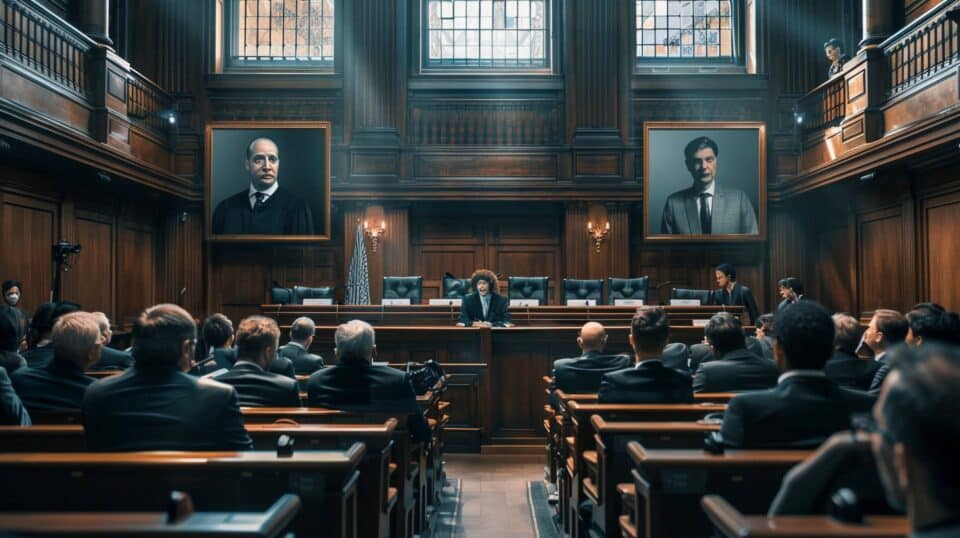
Courts are getting busy with cases against deepfake creators. They’re cracking down, issuing hefty fines and sentences to those who cross the line.
Lawsuits and legal actions against deepfake creators
Deepfake technology poses real challenges, especially when it comes to non-consensual deepfake pornography. Laws and legal actions are adapting to keep up with these challenges. Here’s how:
- Victims have sued deepfake creators for image – based sexual abuse. They argue that their images were used without consent, leading to emotional and reputational damage.
- States like California and New York now let residents take civil action against those who create deepfakes meant to harm. This means victims can sue for damages.
- Federal law targets copyright infringement, which some deepfakes violate by using copyrighted material without permission. Creators could face legal consequences under these laws.
- Anonymity complicates lawsuits. Many creators hide their identities, making it tough for victims to know who to sue. But efforts are underway to peel back anonymity layers.
- Social media companies face pressure to remove harmful deepfake content under Section 230 of the Communications Decency Act. Though this law protects them from being held liable for user-posted content, public outcry and legal challenges push them towards stricter enforcement.
- Legal responses also include court orders directing websites like Pornhub to take down explicit videos created with deepfake technology. It shows courts taking a stand against unauthorized use of someone’s image.
Punishments for posting a deepfake
Laws are getting strict with deepfakes, especially those that harm others. In some states, creating and sharing malicious deepfake content can land you fines or even jail time. Imagine being fined thousands of dollars or spending months in a cell—scary, right? It’s not just about paying money; it’s about the mark it leaves on your life.
Employers might not hire someone who’s crossed the line into illegal territory.
Now, let’s talk specifics—10 states have stepped up their game with laws targeting this issue directly. They’re not playing around. And it’s not just about individuals; platforms hosting these deepfakes also face heat under new proposals.
The message is clear: create, share, or host harmful AI-generated content, and there will be consequences—a mix of legal actions aiming to protect people from harmful digital impersonations.
How to Identify Deepfakes
Spotting deepfakes isn’t always easy, but there are clues. Watch for unnatural movements or slightly off sync audio – these can be giveaways.
Spotting the signs of AI-generated content
AI-generated content has a few telltale signs. Odd expressions or slightly off lip sync in videos are big clues. Look for unnatural skin tones or lighting, too — they just don’t look right.
Text generated by AI might seem awkward or repeat phrases oddly, as if it’s not quite sure how to mimic human speech patterns.
Tools and technologies can help us catch these fakes. Apps and browser extensions exist that analyze videos and texts for authenticity. They check for those weird glitches in visuals or writing I mentioned earlier.
It’s like having a digital detective on your side, uncovering the truth behind what we see and read online.
Tools and technologies for identifying deepfakes
Identifying deepfakes is crucial to protecting our kids from digital harm. As a parent, I’ve found these tools and technologies super helpful:
- Visual Analysis: This involves looking closely for inconsistencies in the video or image. Check if the lighting looks odd or if shadows don’t line up right. These small clues can signal a deepfake.
- Blink Rate: Research shows that deepfakes often have a lower blink rate than natural humans in videos. Watching for natural blinking can be a simple yet effective way to spot fakes.
- Audio Inspection: Sometimes, the voice doesn’t quite match up with the person’s usual tone or speech patterns. Tools like Adobe Audition allow us to analyze audio for any signs of manipulation.
- Reverse Image Search: Google and TinEye offer reverse image searching, which helps find the original sources of images or whether an image appears elsewhere in a different context.
- Deepfake Detection Apps: Several apps are now available that use AI to detect deepfakes. These apps analyze videos and images for authenticity, giving users peace of mind.
- Blockchain Verification: Some platforms are starting to implement blockchain technology to verify the authenticity of digital content, making it easier to trust what we see online.
- Professional Software: Tools like Photoshop have features designed to detect edited images. Though more technical, they’re incredibly effective for those who have access and knowledge.
- Online Fact-Checking Services: Websites like Snopes.com help verify the credibility of stories and media circulating on the internet, including potentially manipulated content.
- Education and Awareness Programs: Various organizations provide resources that teach both adults and children how to critically assess digital content.
Navigating the Future of Deepfakes
Deepfakes sit in a gray area of legality, hinging on intent and harm. Laws are catching up, targeting misuse while navigating free expression rights. Spotting deepfakes can be tricky; yet, advancements in AI detection promise help.
As technology evolves, so does the legal landscape—aiming to protect without stifling innovation. Stay informed, as this digital age challenge unfolds.
FAQs About the Legality of Deepfakes
What are deepfakes, and why do they matter?
Deepfakes use AI technology to create videos or audio clips that look and sound real, like making it seem as if someone said or did something they didn’t. They’re a big deal because they can trick people, spread lies, or harm someone’s reputation.
Can creating deepfakes get you in trouble with the law?
Yes, making deepfakes to defraud, commit identity theft, cyberbully, or spread disinformation can lead to legal troubles. Laws are catching up fast to tackle these new challenges.
How does the First Amendment play into this?
It’s tricky—while the First Amendment protects free speech; courts balance this against rights like privacy and not being defamed. Not everything made by AI gets a free pass under “free speech.”
Are there specific laws against using someone’s image without permission?
Absolutely! Using an individual’s image without their consent for creating deepfakes violates intellectual property rights and could be seen as defamation or harassment.
What should I do if I’m a victim of a harmful deepfake?
First off — stay calm… then consider reaching out for legal advice on remedies available under copyright laws, torts for defamation or fraud if your identity was misused for making false claims.
How can creators use AI ethically when making content that involves other people’s likenesses?
Creators must get clear consent from anyone whose image or voice might appear in their work; focusing on transparency is key… always think about how your creation impacts others and respect user privacy at all times.
